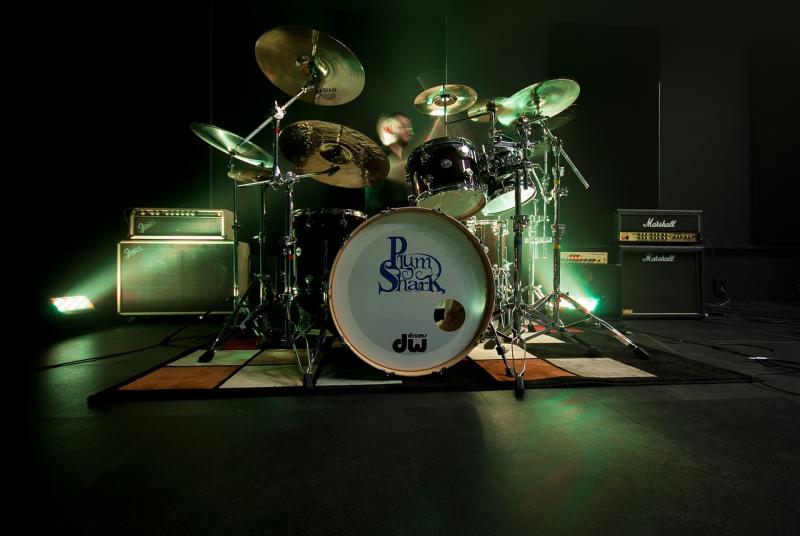Next, get familiar with the different parts of your drum kit. You’ll usually find a bass drum, snare drum, toms, hi-hat, and cymbals. Each component has its unique sound and purpose. If you're new, the snare is great for practice because it produces a sharp, clear tone that's perfect for learning basic rhythms.
Once everything is set up, grab your sticks and start with some basic beats. Focus on keeping a steady rhythm. It’s all about finding your groove! You can start with a simple beat by playing the bass on counts 1 and 3, and the snare on 2 and 4. Add in the hi-hat for a nice shine on top.
Don't forget to practice consistently! Even just a few minutes a day can make a huge difference. Play along with your favorite songs to see how they incorporate drums. This can really help you understand timing and make learning even more fun!
Understanding Basic Drum Beats
Starting your drumming journey? Let’s break down the basics of drum beats! Understanding these foundational rhythms will set you up for success as you explore more complex patterns down the road.
At its core, a drum beat is just a steady pulse. Most songs you hear are built around a simple beat that repeats throughout. The most common time signature in popular music is 4/4, which means there are four beats per measure. Each beat can be represented by a kick drum, snare drum, or hi-hat. Here's a quick look:
Let’s try a simple beat: play kick on beats 1 and 3, snare on 2 and 4, with hi-hat ticking away on every beat. Count it out like this: “1 (kick), 2 (snare), 3 (kick), 4 (snare).” It sounds great together and creates a solid foundation!
As you get comfortable, try mixing it up! Play with different rhythms or add fills to switch things up. The key is to practice regularly. Soon enough, you’ll find your groove and be ready to explore different styles and genres. Happy drumming!
Simple Techniques for Better Drumming
Getting better at drumming doesn't have to be complicated. A few simple techniques can significantly enhance your skills. Here are some easy tips to help you elevate your drumming game!
1. Focus on Your Grip
The way you hold your drumsticks makes a big difference. Make sure you grip them lightly but firmly. You want to control the stick without squeezing too hard. A relaxed grip keeps your wrists loose, allowing for better movement and speed.
2. Practice Basic Rhythms
Start with simple beats like the basic rock rhythm or a straightforward shuffle. These foundational patterns are the building blocks for more complex rhythms. Use a metronome to keep a steady tempo and gradually increase your speed as you get comfortable.
3. Work on Your Timing
Good timing is key to being a great drummer. Play along with your favorite songs to get a feel for different tempos. Try counting out loud or mentally keeping track of the beat. This practice helps you lock in your timing and stay in sync with the music.
4. Use a Practice Pad
A practice pad is great for honing your skills without the noise of a full drum set. It's perfect for working on your stick control and rudiments. Spend some time each day drumming on it to build muscle memory and improve your technique.
Practicing Tips for New Drummers
Starting your drumming journey can feel a bit overwhelming, but don’t worry! Here are some practical tips to help new drummers get the hang of it. Remember, practice makes perfect, but it should be fun too!
First off, set a regular practice routine. Consistency is key when learning any new skill. Try to practice at the same time each day, even if it’s just for 15 minutes. This helps your brain and body get used to drumming. You can gradually increase your practice time as you feel more comfortable.
Next, focus on basic rhythms before moving on to complex beats. Start with simple exercises like the basic rock beat. Break everything down into smaller parts. Play the bass drum separately, then add in the snare, and finally, don’t forget about the hi-hat. It’s all about layering those sounds step by step.
Using a metronome can be a game changer for developing your timing. This handy little tool keeps you in rhythm as you play. Start at a slow tempo and gradually increase the speed as you become more confident. You’ll be amazed at how much better your timing gets!
Lastly, have fun with it! Play along with your favorite songs or jam with friends when you can. Experimenting with different styles and sounds keeps things exciting and helps you discover what you love about drumming. Keep enjoying the process, and you’ll see great progress before you know it!



